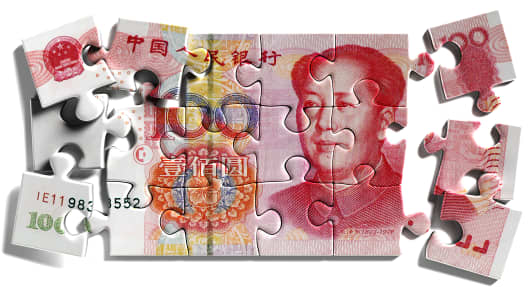China's economic debt bubble is expanding at alarming pace- analyst warns of coming disaster

CHINA - Steen Jakobsen, chief economist at Saxo Bank emailed a pair of interesting links on the explosion of investment and debt in China. First consider the BBC report How China Fooled the World by Robert Peston. Robert Peston travels to China to investigate how this mighty economic giant could actually be in serious trouble. China is now the second largest economy in the world and for the last 30 years China’s economy has been growing at an astonishing rate. While Britain has been in the grip of the worst recession in a generation, China’s economic miracle has wowed the world. Now, for BBC Two’s award-winning strand This World, Peston reveals what has actually happened inside China since the economic collapse in the west in 2008. It is a story of spending and investment on a scale never seen before in human history – 30 new airports, 26,000 miles of motorways and a new skyscraper every five days have been built in China in the last five years. But, in a situation eerily reminiscent of what has happened in the west, the vast majority of it has been built on credit. This has now left the Chinese economy with huge debts and questions over whether much of the money can ever be paid back. Interviewing key players including the former American treasury secretary Henry Paulson, Lord Adair Turner, former chairman of the FSA, and Charlene Chu, a leading Chinese banking analyst, Robert Peston reveals how China’s extraordinary spending has left the country with levels of debt that many believe can only end in an economic crash with untold consequences for us all.
There are two ways of seeing this. First, even before the great stimulus, China was investing at a faster rate than almost any big country in history. Before the crash, investment was the equivalent of about 40% of GDP, around three times the rate in most developed countries and significantly greater even than what Japan invested during its development phase – which preceded its bust of the early 1990s. After the crash, thanks to the stimulus and the unleashing of all that construction, investment surged to an unprecedented 50% of GDP, where it has more or less stayed. Here is the thing: when a big economy is investing at that pace to generate wealth and jobs, it is a racing certainty that much of it will never generate an economic return, that the investment is way beyond what rational decision-making would have produced. But what makes much of the spending and investment toxic is the way it was financed: there has been an explosion of lending. China’s debts as a share of GDP have been rising at a very rapid rate of around 15% of GDP, or national output, annually and have increased since 2008 from around 125% of GDP to 200%. “Most people are aware we’ve had a credit boom in China but they don’t know the scale. At the beginning of all of this in 2008, the Chinese banking sector was roughly $10 trillion in size. Right now it’s in the order of $24 to $25 trillion. That incremental increase of $14 to $15 trillion is the equivalent of the entire size of the US commercial banking sector, which took more than a century to build. So that means China will have replicated the entire US system in the span of half a decade.” There are no exceptions to the lessons of financial history: lending at that rate leads to debtors unable to meet their obligations, and to large losses for creditors; the question is not whether this will happen but when, and on what scale. Utopia
